Natural intelligence represents the natural order and the entire earth-tested treasure trove of biologically- encoded, environmentally- influenced, and socially- adapted behaviors, survival strategies, community dynamics, environmental responses, resistance measures, and ecological stewardship that life on earth has to offer. This treasure trove of natural intelligence is exhibited and expressed uniquely and dynamically in the diversity of species– forever tuning and retuning the next generation for optimal survival in an ever-changing environment. The biodiversity in the animal kingdom alone is an amazingly rich, unparalleled library of biological brilliance– the hibernating grizzly bear in winter; the camouflaged covert octopus on the ocean floor; the zero waste lemur in the zero waste rainforest; the orangutan hunting for medicinal herbs, the Chinook salmon following the river’s unique scent to spawn life again at home, the kangaroo carrying her young joey in her pouch to protect him from harm, the minute sized, uber-social ants with the inherent and learned capacity to create extraordinary social movements powerful enough to shift the mindset of the masses—and literally millions entries more. This collective intelligence represents life’s survival strategies, again accumulated over 3.8 billion years. The miracle is that this collective intelligence is etched into the evolutionary DNA of all species alive today. This means that life’s collective intelligence is encoded in our own living cells. Every one of us has the inherent knowledge essential to adapt to any environmental crisis, any social chaos, any change in our location or stage of life. And that potential is immense, like a seed that contains not only the nutrition it needs for the first days of gestation in the soil; but also all the instructions for growth, development, and maturity throughout life, even transitioning to death.
Isn’t it then extraordinary that over the past 50 years we have born witness to the extinction of over 52% of vertebrate wildlife, extinction at a rate 1000x times greater than in all of human history? (IUCN Red List 2020) Likely, many of us really didn’t grasp the gravity, nor understand the permanent loss of creatures we may never know (Sir David Attenborough), who soldiered on, doing their part to contribute to the campaign of life… until they faded into earth’s geologic fossil record. Those animal species who have gone extinct during this punctuated equilibrium (Steven J. Gould, Harvard) sixth extinction are Life’s Unknown Stewards naturally intelligently campaigning for each one of us in the biosphere until the sun sets over their species’ horizon. Likely, many of us didn’t make the connection to the 400 vertebrate species gone extinct in the last 100 years. Nor have we well correlated the continual encroachment of human-divined landscapes into the wild to species lost. Nor have we well communicated the connection between the conversion of wild lands to cement cities and parking lots and manufacturing plants and industrial-scale monoculture farms, closed range ranches, genetically modified and grafted orchards, shopping malls, and same-same suburbia to the disappearance of wild life. Nor have we connected the intensification of agricultural lands, increased animal food production, exploitive consumption of high risk species, the increased encroachment on wild land, and the increasing illegal trade of exotic species; globally to the exponential risk of a full-blown viral pandemic powerful enough to bring our global economy and society to an abrupt hallowing halt. But now we know.
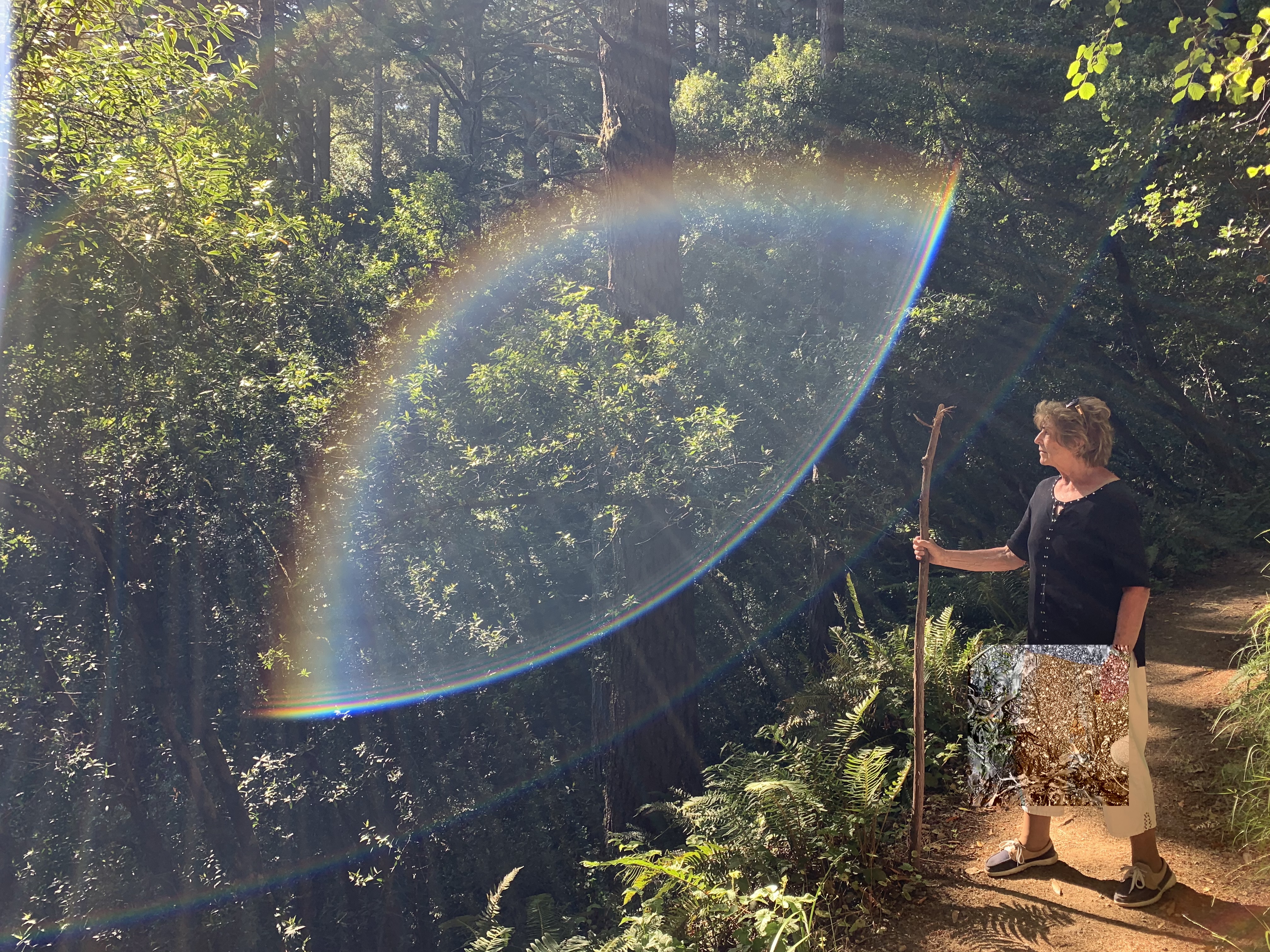
And the good news is that now that we know, we have great cause to pause – to abandon human actions that don’t well serve the health and wellbeing of the biosphere, to adapt to our dynamic planet, and to adopt life-giving lifestyles, sustainable business models, and powerfully positive international policies that every country and people can embrace to protect our planet and the human race. What’s at stake? More than a million species of plants and animals risk extinction within few decades, resulting in a severe decline of ecosystem functioning and nature’s free exchange of services among one another, as well us-humans, upon which all of life depends. Already, almost 3/4th of wild land and 66% of marine environments have been significantly altered by human activity and more that 85% of wetland areas, lost (IPBES Global Assessment Report), while 90% of large fish have been lost (Peter Thompson, World Ocean Day 2020), more than 25% of forest ecosystems have disappeared in the tropics, and permafrost melt across Siberia is rapidly increasing (Tom Lovejoy, World Environment Day 2020). The good news is that rainforests are still home to over 50 million species and responsible for 50% of the plant diversity of the planet. We can start today and change our future way. The good news is that the EU just launched is Biodiversity Strategy for 2030 with more stringent legislation on deforestation, agriculture waste, and consumer goods. Further, the EU announced plans to set aside 25% of the 826 billion USD in CV19 recovery for green climate friendly building retrofits, clean energy, EV vehicles….and sustainable land use (EU Green Deal 2020). Happy Tropical Forest Day 2020.

And, the good news is that we still have 7.8 million species known (Inger Anderson, UNEP) to steward and protect, while at least 237,000 populations of mammal and bird species threatened to soon go, according to IUCN’s Red List 2020…We have the agency and knowledge now to reimagine a new way for humanity to make a New Deal with Nature. And, the good news is that WWF Intl and friends just launched a new Call for Global Action 2020 to provide insight and direction. The Call outlines specific actions for optimizing the funds from recovery packages, protecting vulnerable communities, investing in long term protection and stewardship of wild habitat, safeguarding the biodiversity of life, making great strides in grossly reducing our exploitative production-consumption-waste-production-consumption cycle.
Will we answer nature’s call? Will we change the way we prey and play and pay for nature’s free services and biodiversity shield of protection? Are we going to make a decision in our own lives to be the change: to learn about our home bioregion, to research the endemic species and ecosystems, to share our curiosity and knowledge and care for wild wellbeing with our cohort of friends and family? Will we expand our conversation and commitment to reclaiming lands-shores-oceans as sanctuaries dedicated to nature’s recovery? Will we safeguard the diversity of life? Will we live lighter on the land and curb our production and consumption by half? The good news is that if we activate our uber social human super power now, then clusters of committed citizens can become combs and combs can become hives and hives can multiply into collectives of hives buzzing continually with life…and sooner rather than later we can find ourselves sipping sweet honey again from the Garden of Eden, having reclaimed the rich biodiversity of life on Earth. (cf. Natural Intelligence of the Honeybees)

Mother Nature gifted us one microorganism, a virus — which has now hacked our human civilization’s code of ethics gone awry –uncovering our compounding vulnerabilities– not only our unsustainable, inequitable relationships to one another, but also our precarious dependence on nature, responsible for fueling our lives and for funding (resourcing) our human habits and activities. One virus has forced us to grasp the gravity of our disregard for the value of our biodiverse earth–- that is… the importance of protecting critical wildlife habitat, of ensuring ecosystem integrity, and of enhancing environmental conditions that promote the greatest biological stake … including for our psychological, mental, social, economic life’s sake. The good news is that we have agency to respond to Earth’s wake up call, now. The great news is that every conscious action by every one of us, counts. Thus, the barriers of entry into a New Deal with Nature are non-existent. We are all players on Earth’s game board of ecological chance and everyone has a unique character to contribute to our current global challenge.
Every one of us is a unique genetic miracle, but more like a tropical forest biome rather than a single leaf or branch growing on a single tree in the forest. And when we can conceive of ourselves in this way—as a complex living organism containing a complex of living organisms and their collective intelligence; then perhaps we can begin to truly appreciate that we are never alone and that the entire biosphere as life’s habitat is home.
This how we begin. We marvel at the miracle of life within. Game on!

Collective Intelligence and Plants
And what about the collective intelligence in the plant kingdom? Plants are supreme adaptors to changes in the environment. But they are even more resilient when in co-creative collaboration with other living beings. Committed to long-term residence in the soil seed bank and underground root matrix; different plant species will maximize success and succession of the whole plant community in different, complementary ways. Some may grow fast and furious toward the sun and soak up gallons of soil water with their deep roots, while others may be drought tolerant and stabilize the soil during dry years. Some may prefer the shade of taller stalks, while others may grow surface roots. Surface rooters may even transform root cells into stem cells and sprout up to the sun, instead of digging down to complete earthen darkness in one run. Some may encase their seeds in sturdy husks to last for centuries until growing conditions ripen. Others may produce nodules on their roots to attract nitrogen-fixing bacteria—born to draw down atmospheric nitrogen and convert it into soil nutrients for their plant partners—eliminating the perceived and promoted need for industrial fertilizers. Most every plant species has benefited from and co-evolved with at least one fellow photosynthesizing friend. Strangely adapted to life without end (as plant cells are designed to live forever), many species in the plant kingdom continually freshen their habitat to instigate the next plant community succession.

And in regard to others in the Garden of Eden, plants decidedly co-evolved constructively with other microorganisms, fungi, insects, and animals, as well. Thus, specific mutualistic relationships (innumerable to count) with plants exist across the green economy from woodpeckers to bark beetles to fruit bats and pollinating honeybees… to bracket fungi (a basiomycete) and hummingbirds to butterflies… and beyond. The checks and balances each of these species naturally place upon one another in the biosphere’s congress of representative life also comprise the collective intelligence inherent to life on earth. Plants seem to form these mutualistic relationships with other living creatures in order to help protect their roots, transport their nutrients, disperse their seeds, pollinate their flowers, outcompete other plants for sunlight, and improve their soil health. And of course, all species alive depend directly or indirectly on the photosynthetic brilliance of plants and their original production of potential energy (C6H12O6), powered by the sun-the source of life. And these synergistic relationships plants have evolved with other living beings really shine when plants are disturbed by a natural disaster– a climate event; a physical disturbance (avalanche, windfall, or fire); or a biological disturbance (insect infestation or fungal disease outbreak— symptomatic of nature re-balancing). For example, following a fire, the lodgepole pine’s serontinous cone seeds fast get to work to re-sprout in rapidly decomposed ashen topsoil and to recalibrate their place, purpose, and new cohort composition, while fireweed brings back soil minerals. Concurrently, mutating microbes in air, water, and soil fire off new genetic codes to re-create conditions that perpetuate plant life and promote overall biodiversity. Nitrogen-fixing bacteria enmeshed in literally miles of mushroom mycelia might flood a disturbed area with nutrients– rescuing plant roots and shoots from despair, and rather instigating their regeneration and repair. Similarly, endemic and empathic animal species might adapt their behavior and interactions with plants in disturbed areas by moving their homes, changing their diets, or adapting their social interactions to cope with the new green playing field. Or in the case of Dendroctonus spp. (deadly) bark beetles, insects might take advantage of a fierce fire by colonizing stressed trees but they also thin forests down to the hardiest trees and create open spaces for new life to emerge. These mosaic patterns encourage species diversity, healthy age distribution, and natural succession. Indeed, this is the same living melody sung by the parasite & host, the predator & prey, the hunter & hunted, the wolf & deer.

Indeed, these mutually beneficial cooperative relationships represent the collective intelligence of the living biosphere playing out in the plant kingdom. And yet these interactions among species do not appear necessarily altruistic; rather selfishly opportunistic with a larger scope of being and sense of Self. Curiously, this mutual exchange of benefit appears innately known and practiced by most members of the biosphere…with the unique exception of many modern humans. Why? Perhaps many of us are living more and more in artificial urban habitats separate from nature. Perhaps we are developing different habits tuned into electronic vibrations spewing constantly from ubiquitous digital devices. Perhaps the direct energy of the earth no longer charges our internal batteries- nor nature’s color and music train our senses. Have digital natives become uber-accustomed to Instagram posts and facebook advertisements that now paint our world, black and white? Do dark virtual games, electronic impulses, synthetic products, synthesized sounds over- inform our field of choice, dominate our spaces, comprise our lived experience, and therefore motivate our decisions about the present and iterate our future…all digital world? Have we this past century lost our way, true humanity gone astray? Have we have become estranged from earth’s vibration–nature’s music? Is it time, yet? Can we go home now?
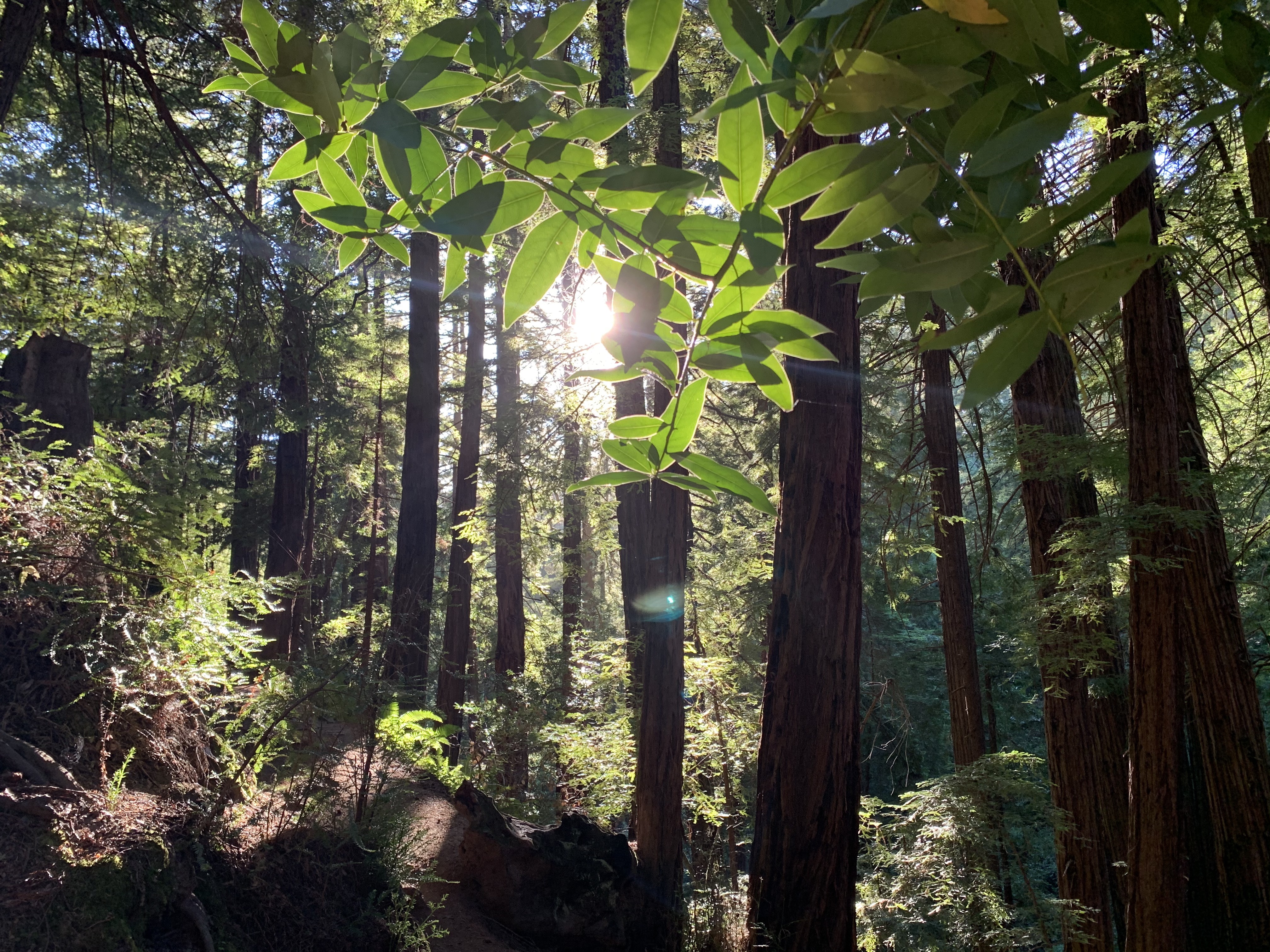
I believe our Mother Earth (Gaia) is calling us Home (Eikos). I believe it is time for us to grow up, to recognize our lives within the context of the greater whole, to evolve our actions in alignment with the symbiotic symphony of nature. What great music we will create when we make a New Deal with Nature and attune our actions to the universal resonance of life—the collective intelligence that’s already entrained to opportunistically protect the body of the biosphere itself (reflected as itself)- Gaia. How do we do that? How do we return to nature? We purge our bodies and our beings of artifice and all things that separate ourselves from nature. We go direct to the source– observe, listen, and learn. That’s why our ancient ancestors and Indigenous peoples today still living close to the land are our greatest teachers. They observe life and life itself teaches them how to live with integrity, balance, empathy, and generosity. And when we train as the smartest of our species do, we will notice that the trees naturally look after the woodpeckers and provide them the perfect hollow (hallowed) home; while the woodpeckers feast on tree-boring insects colonizing (and cutting off) the tree’s phloem. When we simply learn to Be Still like the Tree, we will start to notice these parings and this spiraling harmonic dance begins to make sense. And if we progress, our senses might even relax more, such that the edge of individual beings becomes blurred—and life’s portrait in the eye of the painter as interconnected lines and shapes and shades of gray; and we start to truly see that all life is actually part of the same biological being, operating with an integrity from the inside-out across the canvass of the entire biosphere– from the smallest ecological niche to the largest macro-ecosystem, inside out. Alan Watts calls this moment of epiphany, the Alleluia moment; where the integrity of being, this supreme joy and celebration of life as an impermanent flow of energy is realized.
Nature’s harmony is life’s collective intelligence that silently sings among plants, microbes, fungi, and animals; which helps plants disperse, while they reciprocate by making food, sinking carbon, cleaning water, and producing life-giving oxygen for their microbe, fungi, insect, bird, and animal companions. Thus, the lesson here is that when we truly join the rest of the living beings in the biosphere in our actions as stakeholders in supporting the health and infinite circular economy-ecology of our common home; then the biosphere will regain its natural integrity and the planetary conditions that support the diversity of life may just chance to recover. In many Native languages the word “plant” translates into “those who take care of us”. My earth teachers confirm for me that this symbiotic relationship between people and plants still exists and thrives in some places and these interactions are also part of life’s collective intelligence, which hopefully we can reclaim with nature’s return to our modern day world’s relatively sterile, artificial, urban experience.

In Praise of Plants:
“On a day like this, when the fiddleheads are unfurling and the air is petal soft, I am awash in longing. I know that thou should not covet they neighbor’s chloroplasts is good advice and yet I must confess to full-blown chloroplast envy. Sometimes I wish I could photosynthesize- so that just by being, just by shimmering at the meadow’s edge of floating lazily on a pond, I could be doing the work of the world while standing silent in the sun. The shadowing hemlocks and the waving grasses are spinning out sugar molecules and passing them on to hungry mouths and mandibles all the while listening to the warblers and watching the light dance on the water.” excerpt from Robin Kimmerer’s Braiding Sweetgrass
If Gaia through her CV19 messenger has taught us anything during this dark night of the spring soul, it is that it is time to mature past the platitudes of prescribing to nature’s solutions to climate change, and rather completely immerse ourselves in the unspoken language of life as Indigenous Peoples know fully well how to do—to sense and to see; to wait, to watch, to listen, to learn… to just Be like a tree. This is our Alleluia moment!

Collective Intelligence and Microorganisms
Speaking of sterile spaces, what about the collective intelligence within the zillions of microbial species living in the air, water, soil—who are integral to our lives and who moderate our resilience levels to changes in the Earth’s environment? Given the sheer numbers of invisible microbes inhabiting our world- swimming in the water, circulating in the air, living on our skin, inoculating the soil, sprinkled onto plant leaves and pet fur, occupying our micro-biome, and resident even in the Arctic and upper atmosphere; we can’t (nor should we want to) sterile ourselves from our biologically rich and rapidly mutating microbe dominated world. What? Why? Humans are comprised of literally 100’s of trillions of living foreign microbes- bacteria, fungi that direct a majority of our emotional, hormonal, and gastrointestinal (GI) systemic processes. According to Dr. Anne-Marie Fine, award-winning researcher and naturopathic doctor, we are surrounded by and immersed in a world of microorganisms – bacteria and fungi and viruses, whose genomic information- collective intelligence holds the key to the mystery of life. Imagine.

Thus, the genetic code of life (from 3.8 billion years of evolutionary life) not only resides within our human cells; but also resides within the foreign cells outside, inside, and all around the living organs and living systems of our living bodies. Foreign bacteria cells, fungal spores, viruses whirl around us daily (1×1031 of them, according to Dr. Zach Bush) riding soil molecules, air particles, and ocean-river water droplets. Akin to all living organisms, these microorganisms are also constantly trying to figure out their place in the ever-changing biosphere. And the good news is that there are so many of them and they are mutating so fast and their genetic milieu is so rich and so diverse that they continue to constantly solve life’s natural selection problems eons faster than any AI human-designed, life-biomimicked, stochastic, boot-strapped, iterative computational process could ever imagine. Forever occupying new niches, these trillions of microorganisms represent ancient nature communing and communicating with itself— selecting novel beings in an endless promotion of life and increased biodiversity. In fact, Janine Benyus (Biomimicry 3.0) suggests that Charles Darwin’s theory of natural selection is not nature iterating and innovating in order to climax into the singular, super (human) organism, optimized for all ecological niches and updated with the most resource efficient genetic code, tooling themselves to adapt to any earth experience. No. Natural selection at work is nature at its evolutionary best as the whole communal, organic, infinite, wavy (non-linear), and redundant biome-building process.
Contrary to the optimization theory of life’s evolution and trend toward greatest efficiency of being; the most sustainable, successful, and resilient biome is the one with the greatest chaotic dynamism and diversity. The most resilient biome actually hangs onto mutant individuals and residual DNA. It celebrates mutations and misspellings of ACGT (Adenine, Cytosine, Guanine, Thymine) nucleotides in “normal” beings because nature knows it is the mutant anomaly who becomes the necessary key on the one abnormal rainy day when the proverbial flood carries all normal individuals away who saves the race from being erased off the game board of life’s play.
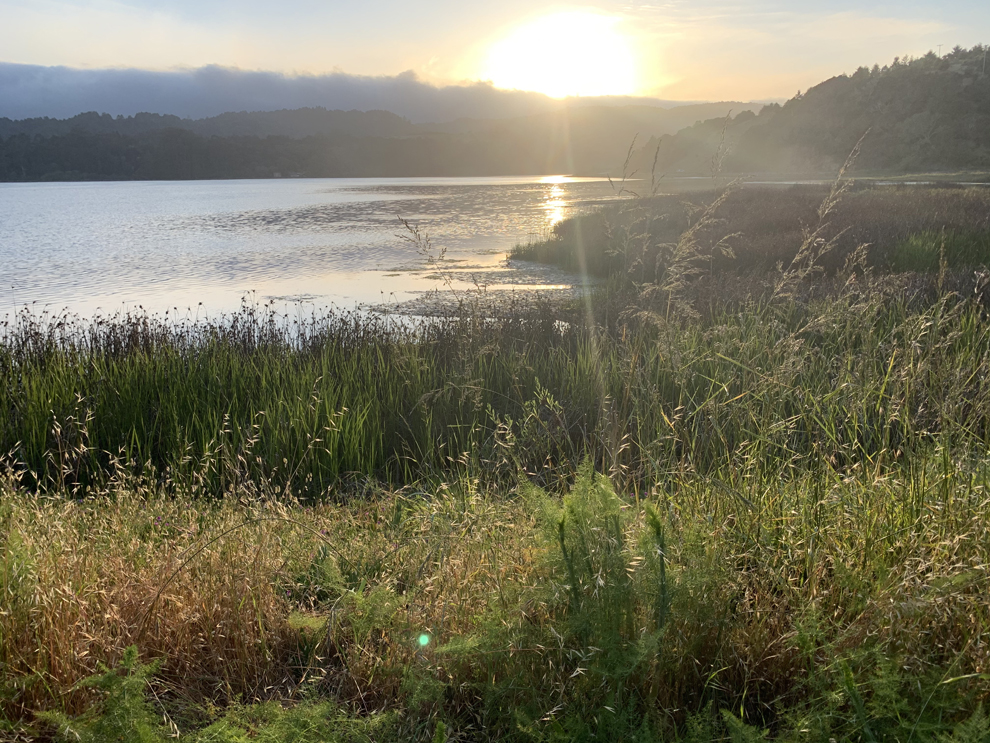
Collective Intelligence and One Specific Microorganism, COVID19
It’s true that during these unarguably disruptive COVID19 times, it is really hard not to vilify viruses universally and to mount an all-out militant attack against all microbes in the material world. The World Health Organization reported today (June 27, 2020) another daily increase of new CV19 cases nearing now 200,000 (@179,316 cases), totaling 9,653,048 confirmed cases and 491,128 deaths, globally. True, we are still at 0.001% of the current (7.8 B) world population infected; but that’s nearly 4 months into a multi-year global pandemic. Did I calculate that ratio correctly?
True, some country transmission trends have peaked and appear in decline; but other hot spots, like the United States (2,407,590 cases), India (509,000 cases), Russia (627,646 cases) and countries in Latin America Brazil (1,228,114 cases), Guatemala, Mexico… are climbing WHO. Meanwhile, its not entirely clear how many cases have actually bubbled up on the continent of Africa. That said, most of the countries with the exception of South Africa, seem to be keeping the numbers low according to the WHO dashboard and UN briefings. Ngozi Okonjo-Iweala, chair of the board of Gavi (Global Alliance for Vaccines) and former Finance Minister of Nigeria, also warn that as 70% of Africa’s workforce-especially in cities; rely on the informal economy to live– making just enough money to feed their families day-day; people will risk contacting COVID19 to work and avoid dying by starvation. Thus, these developing countries could serve as smoldering roots for the virus underground in the global south, which could easily re-emerge in a second wave across countries in the global north at the end of 2020. In response to this growing global concern, a number of developing country experts and well-seasoned health professionals like Dr. David Nabarro (Narrative Series) continue to beat the drum on: maintaining higher standards of health and hygiene, wearing masks, and creating physical distance…as much as possible. That said, all agree that as we will likely be living with the virus for a few years; we will have to now start to create new protocols, ways of interacting that are more conscious and respect different people’s varying levels of risk and acceptance of risk within social bubbles and boundaries of respect for the virus and its lethal impact on especially the most vulnerable in society.
“Remain vigilant. This virus is by no means over.”
Dr. Michael Ryan (WHO, June 11, 2020 UN briefing)
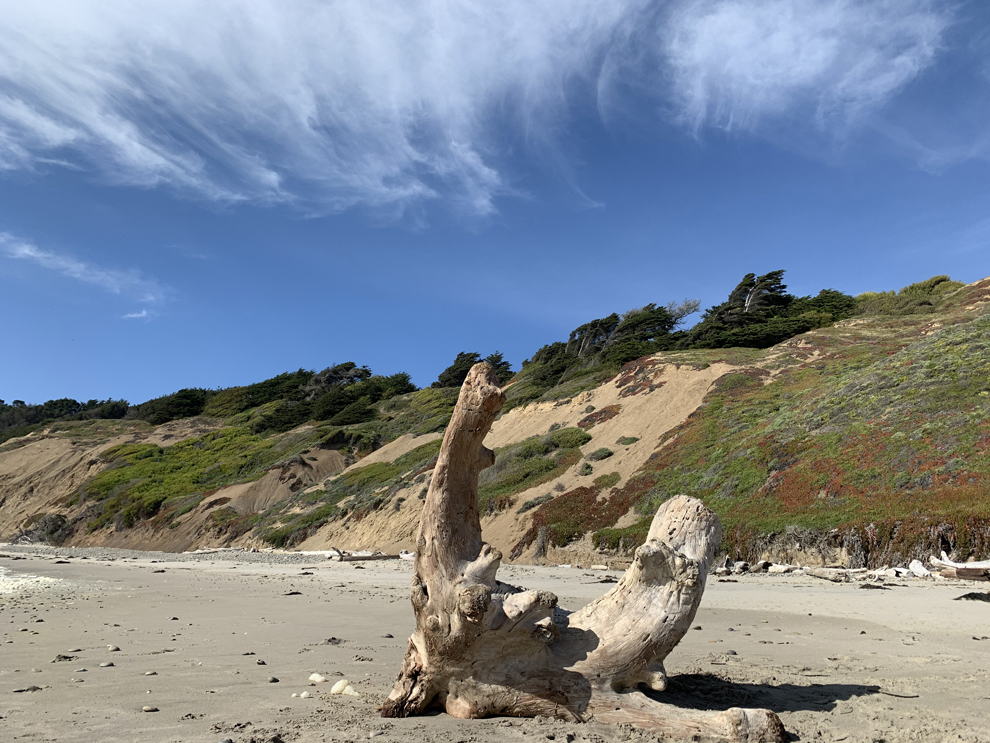
True, recent historic influenza outbreaks seem to peak in two-year cycles. But is it fair to compare COVID 19 with outbreaks throughout the century? Since every pandemic affects society in a specific historic context, culture, and environmental condition, maybe it is not correct to compare other recent flus epidemics to COVID19? And that said, perhaps it is valuable to at least be aware of the other top five recent global influenzas and average annual flu mortality rates from our recent past to glean what we can from history; so as not to repeat the bad and carry forward the good.
- Russian Flu in 1889: 1 million people died, global news played role to inform people
- Spanish Flu in 1918-1919: 500 million (33% of the global population) contacted the virus; 50 million- 100 million people died; no vaccines, no antiviral treatment, no movement restrictions as we were in the midst of World War I
- Asian Flu in 1957-1958: 1.1 million people died, vaccine was rapidly developed
- Hong Kong Flu in 1968-1969: 1 million people died
- Swine Flu (H1N1 Pandemic) in 2009: 151,700-575,400 people died, 80% younger than 65 years old
(c.f. CDC (Center for Disease Control in the US, January 2020)
- Seasonal flu causes less than 0.1% mortality rate on average/year, affecting 3-5 million people/year, and causing 290,000-650,000 deaths, annually. (World Health Organization, March 20, 2020)
Whether or not you discern that it’s super important to remain super- careful and hyper-alert to the virus, conscious of others, and simply cautious moving in our new world, while Staying Calm, and Carrying On; it’s important to remember that this is not the only pandemic we have suffered as a species in the past (hence my little interlude above) and it will not be the last (Larry Brilliant, former WHO Director, TED 2020) . Going forward, it’s also important to put this novel virus into ecological perspective as one among trillions of individual life forms constantly mutating in the entire microbial kingdom and ubiquitous on planet earth. That said, the conservation community is becoming more vocal about our unhealthy relationship to nature-destroying wildlife habitat that reduces biodiversity and therefore reduces resilience to biological imbalances and viral infection, persistent in stressed wildlife coming in greater contact with domestic animals and people, continuing to encroach on wild lands…and the cycle continues. (Call to Action, WWF Intl 2020) Could it be that a critical aftershock of exponential biodiversity loss this century is the reduced ability of the reduced microbial community to mount a counter-attack of collective intelligence against a novel virus? This was one of the major themes reiterated during the World Environment Day (June 5, 2020) by ecologists and political leaders like Inger Andersen, Director of UNEP and Carlos Manuel Rodriquez, Environmental Minister of Costa Rica. Could it be that COVID19 is not the catalytic cause of our global distress and death; but the symptomatic after-shock of an increasingly polluted, biodegraded world – reflected inside our human bodies and outside Gaia’s earth body? Perhaps the silver lining that the Chaos of COVID19 has catalyzed from an environmental perspective is the unmasking of lethal levels of environmental pollution, habitat fragmentation, and biodiversity loss in COVID19 hot spots. The good news is that as carbon-polluting activities have been curtailed with government measures to mitigate the risk of transmission of the disease; air pollution has decreased, globally. NASA reported in April 2020– a 30% drop in air pollution over major cities in US, China, and Europe. And recently, NASA partnered with the ESA (European Space Agency) and JAXA (Japanese Aerospace Exploration Agency) to produce an Earth Observation dashboard that will report near real-time GIS information to track air quality, water quality, climate change, economic activity, and agriculture. (June 2020)
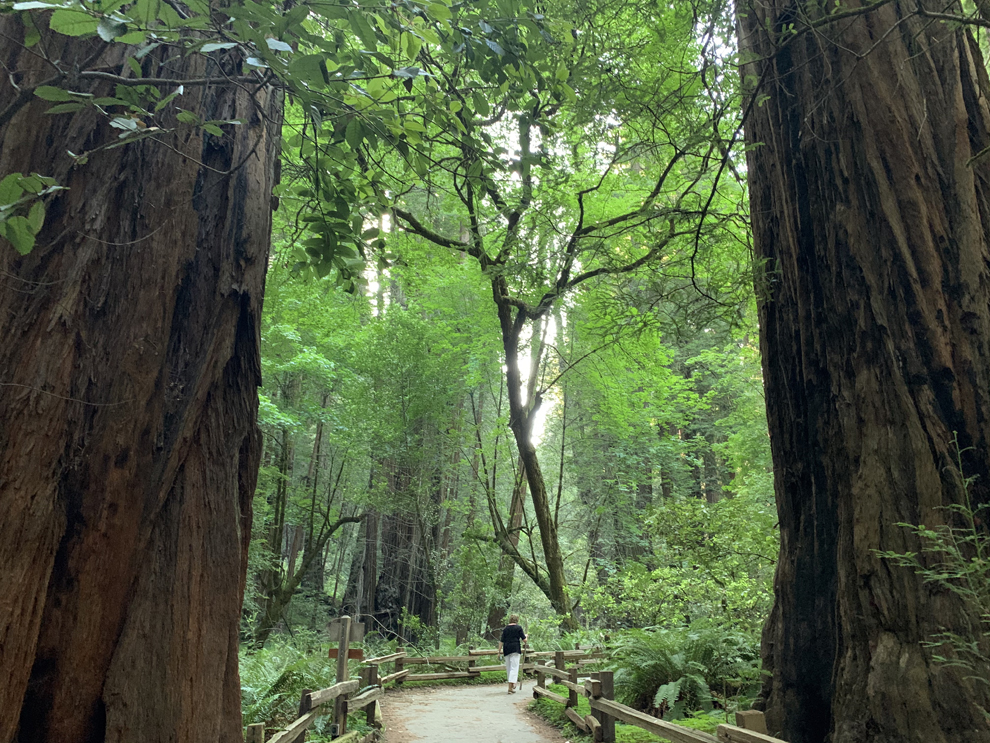
This is important. Why? While mountain ranges like the Himalayas are becoming unveiled by reduced air pollution and cleaner waterways are revealing greater abundance of wildlife in human+nature habitats (e.g. dolphins and swans in Venice, Italy); the conservation community warns that the pandemic has also exacerbated the risk of environmental degradation in many ways. Urban environments experiencing greater threat of CV19 spread have caused many people to return home to rural communities; increasing the risk of spreading the virus also outside the city hubs of CV19 transmission to the wider bioregion. As local economies continue to suffer and tourism – ecotourism is minimized, international travel is still largely shut down for the summer; desperate people turn to land grabbing, illegal mining, deforestation, and wildlife poaching. (M. Sanjayan, Conservation International, June 2020) Certainly, the lethal cocktail of natural habitat and biodiversity loss only feeds back into the non-virtuous spiral of increased risk to future viral threats and human infection. The links among the personal health of humans, economic health of resource-dependent communities, and ecological health of wild nature has never been clearer and more pronounced. Never before has it been so urgent to help communities prioritize the protection of their biodiversity heritage and engage only in economic opportunities that are going to reinforce the health and value of the natural world of which we are all stewards.
Translation:
- Trees should have more value standing than dead.
- Protecting biodiversity should be central to a new bio-economy.
- Habitat restoration and regeneration efforts should produce new conservation jobs.
- Employment to police illegal wildlife trade should be a priority and highly desirable work
- The market for exotic pets, bushmeat, ivory tusks, shark fin soup should be dramatically devalued across world cultures
- Greater connection between human health and planet health should continue to be made and mindsets shifted toward protecting the biological health of our planet, ourselves.
On the human health note and concurrent to the conservation call to action; many modern environmental, naturopathic, holistic health doctors, as well, ancient natural medicine practitioners are now broadcasting more widely (or maybe now more people are listening, social media is highlighting) prescriptions for human+nature health. They also emphasize the care of both our internal and external environments to bolster personal wellbeing & communal health and resilience in order to naturally mitigate the intensity, frequency, and spread of dangerous viruses.

Curiously, unhealthy natural environments coupled with high levels of air pollution seem to be correlated with the world’s hot spots hardest hit by COVID19 initially (Wuhan, Northern Italy) and suffering highest rates of transmission, currently (India, US, Brazil, Russia). (NASA 2020) (ESRI, WHO Dashboard) Physician Zach Bush MD describes that when the level of air pollution exceeds 20x microns of aerosols in the atmosphere (c.f. Dr. Zach Bush & Harvard Study, 2020), then human immune systems become weak and the human body becomes more susceptible to chronic diseases spurred on by a disruptive virus, like COVID19. According to Dr. Anne-Marie Fine, Naturopathic doctor/VP of the National Association of Environmental Medicine; 99% of the CV19 deaths in China and Italy reflect individuals suffering from one or more chronic diseases-diabetes, obesity, cardiovascular disease, asthma, allergy. As chronic diseases have increased in parallel with greater exposure to harmful chemicals, plastics, agricultural herbicides/insecticides, heavy metals, PCBs, detergents, chemicals (e.g. the deadly dozen) in the home and office; our immune systems have already been compromised more than we realize. Dr. Fine suggests that many home indoor environments may even be 5-18% more toxic than outside our home. Thus, it is super that respected business leaders, like Marc Benioff, are discovering the value of business outdoors. Why can’t meetings be conducted on walking trails or in downtown parks or along the seashore? Indeed, in a post-CV19 era why not imagine the outdoors as the new office, indoors. Wellness in the workplace has become the new Greenbuild movement. (Wellness)
Further, when our internal micro-biomes lack biodiversity (the abundance of species and types of microbial species), then the genetic information in our living cells to mount a counter attack of the virus is compromised. In a recent 2020 study evaluating the gut flora of rural African communities and Americans; it was found that the micro-biome of most Americans (on average) is already 90% deplete of natural flora and fauna due in large part to our cultural preferences for sterile (anti-bacteria, anti-viral, anti-microbial) environments (Dr. Zach Bush, 2020). Curiously, this depletion coincides in time with the exponential rise of chronic diseases in American children from 1.2% of children in 1960 to 52% of children suffering from over 20 chronic health conditions in 2020 (Academic Pediatrics 2020). Environmental doctors, like Dr. Anne-Marie Fine and Dr. Zach Bush remind us that during these stressful COVID19 days the more we separate ourselves from the natural world and sterilize our artificial, unhealthy interior environments the weaker our immune systems become and the sicker we get when exposed to a potential viral threat.
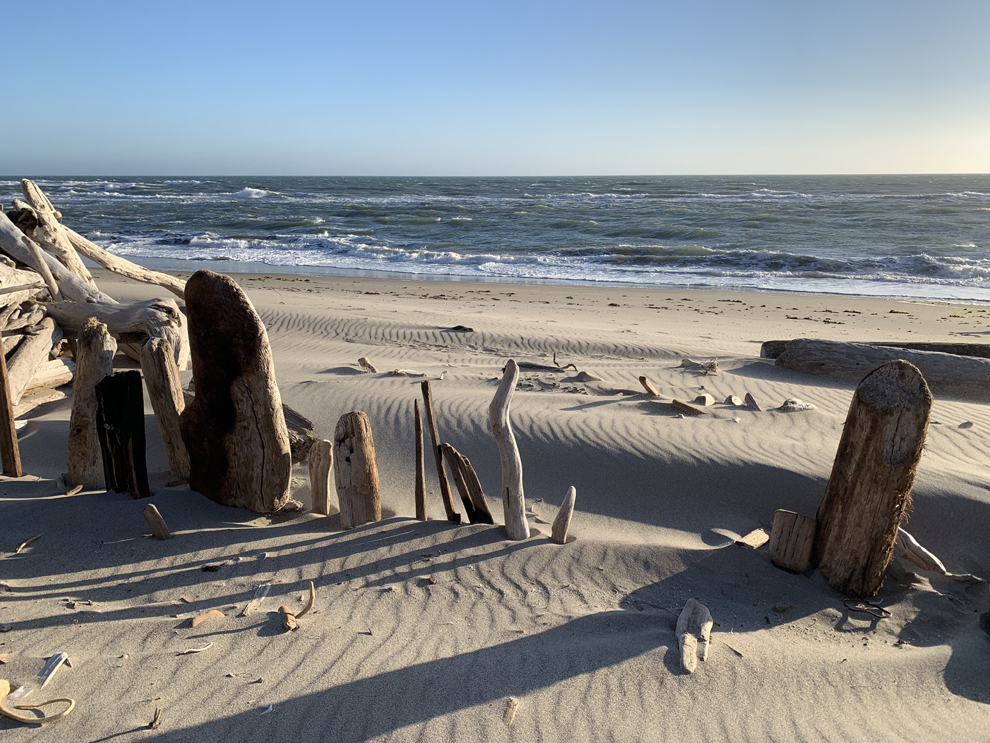
“If 50% of our human genome is virus, then we were built on the machinery of viruses. When we damn viruses, we damn the language of life itself. Nature is an adaptive, beautiful machine and when under stress it sends out the call for life to generate more genetic information to counter the stress. Microbes respond first and fastest to the call.” Dr. Zach Bush
Therefore…
What would our collective intelligence do now as humans living in solidarity with one another and in right relationship to the natural world?
Could it then be wise to moderate our attack of all microorganisms back-to-back—to halt our excessive anti-bacterial and anti-fungal campaigns with synthetic drugs and dangerous chemicals—(the dirty dozen cleaning agents in our homes, the carpet-paint-veneer-wallpaper off-gas in offices, and the glyphosate soil stain in industrial farms) –against all viruses-bacteria-fungi-microorganisms?
Could it be more ecologically correct to still celebrate the diversity of microbial life, walk barefoot on the earth, and breathe deep the nature’s invigorating scent to fill our lungs with now fresher air and members of the microbial kingdom who benefit our health, help us build environmental immunity, and ultimately gift us our lives at great evolutionary pains?
Could one of our greatest defenses now against COVID19 be boosting our immunity with: herbs, like ginger, lemon, and Echinacea; a healthy diet; exercise outdoors; healthy social relations and social bubbles (even if physically distant); and healthy release of the socio-economic stress with familiar human touch?
Could it be essential to our health and wellbeing to physically embrace the soil and earth, breathe in the (now less polluted) air’s natural microbes, drink natural spring water, and cultivate a healthy, balanced internal-external microbiome- macrobiome?
Could it be now critical to learn from the past, embrace the present, and create a new relationship to nature that is sustaining ecologically and economically for all?
Well, one thing we know for sure now is our personal health is indeed reflective of our planetary health. The CV19 corona virus has been a great teacher to guide us to this personal-planet proof and ecological truth…and for this I am at least grateful.

Dr. Catherine Cunningham, PhD, Natural Intelligence Media is committed to awakening Natural Intelligence in the World. She produces multimedia content — books, films, and podcasts with her creative companions that aim to inspire everyone, everywhere to live a happy, healthy, naturally intelligent life.
Visit our Natural Intelligence Website HERE.
Participate in our “Combatting COVID-19 with Compassion” Heart Campaign HERE
Listen to my Naturally Intelligent by Design Podcast, featuring strategies from animals in our world to adapt to disruptive environmental change. HERE
Listen to our Natural Intelligence Worldwide Podcast HERE.


